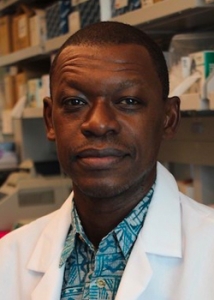About a third of us are walking around with the bacteria that causes tuberculosis (TB) in our bodies, but most don’t actually end up with TB. For children living with HIV—about 2 million at last estimate—it’s a different story. They’re much more likely to develop TB, and about 40,000 HIV-positive children die from it each year.
To explore how HIV puts children at greater risk of contracting and dying from TB, an international team of scientists, led by researchers at the University of Hawaiʻi at Mānoa, University of Pittsburgh, and the University of Wisconsin-Madison and have secured a five-year, $6.2 million grant from the National Institute of Allergy and Infectious Diseases.

The grant will fund nonhuman primate experiments to understand disease mechanisms and explore a potential therapeutic approach. Then, extending from the laboratory to the field, Lishomwa Ndhlovu, professor of tropical medicine in the UH Mānoa John A. Burns School of Medicine will investigate whether the same findings are true for children living in Myanmar, where rates of HIV and TB are both high.
“Children with HIV are very vulnerable to TB, and anything we can do to try to better understand the pathology of the disease and potentially develop new interventions would make a great dent in the morbidity and mortality of the two diseases,” Ndhlovu said.
Children have distinct immune responses
“Kids are not small adults. They have distinct immune responses. You can’t necessarily extrapolate results from adults to kids,” said principal investigator Charles Scanga, research associate professor of microbiology and molecular genetics at the University of Pittsburgh.
In collaboration with the Yangon Children’s Hospital, Ndhlovu and his team will look at blood samples from children in Myanmar. The idea is to see whether children living with HIV have the same T cell deficiencies and immune exhaustion markers as the laboratory animals do, and whether those markers correlate with TB coinfection rates.
“We are very fortunate to have an ongoing study of HIV in children in Yangoon and we have leveraged that opportunity to see how we can investigate how we can prevent TB in this vulnerable HIV population in children,” said Ndhlovu.
Read more about the study on the JABSOM website.
—By Tina Shelton

